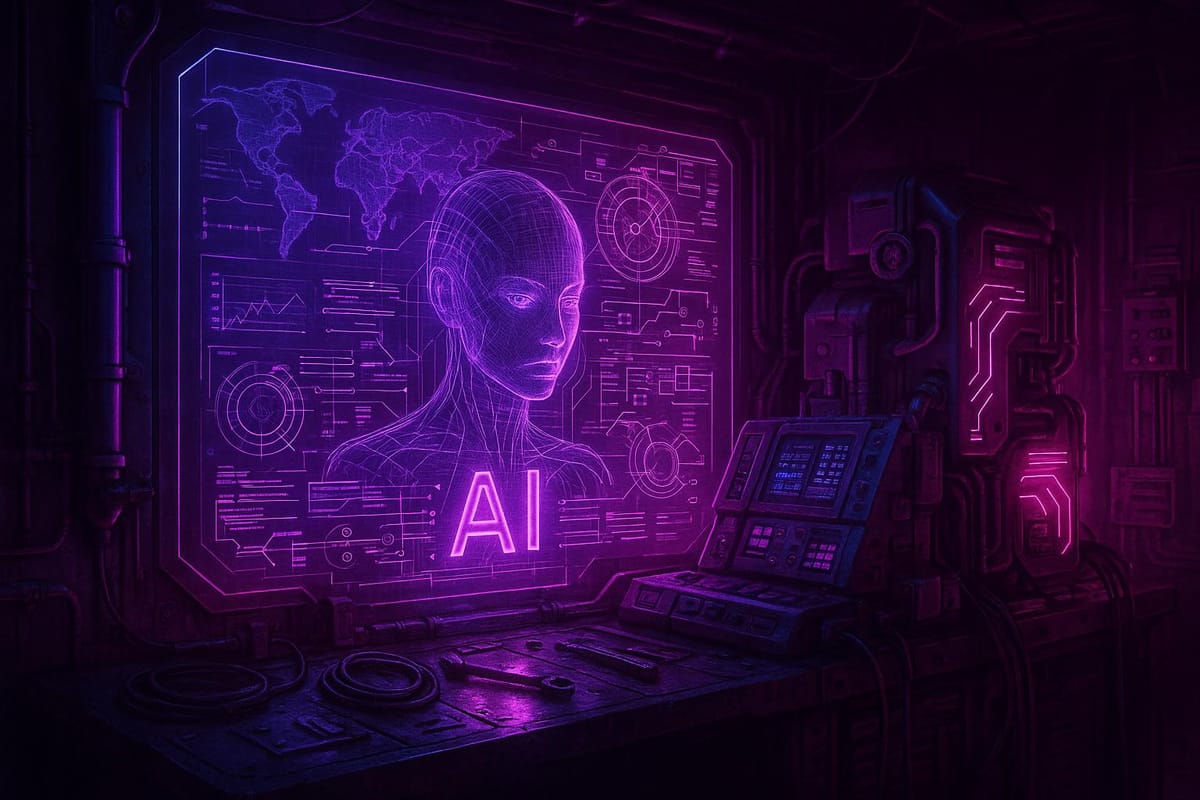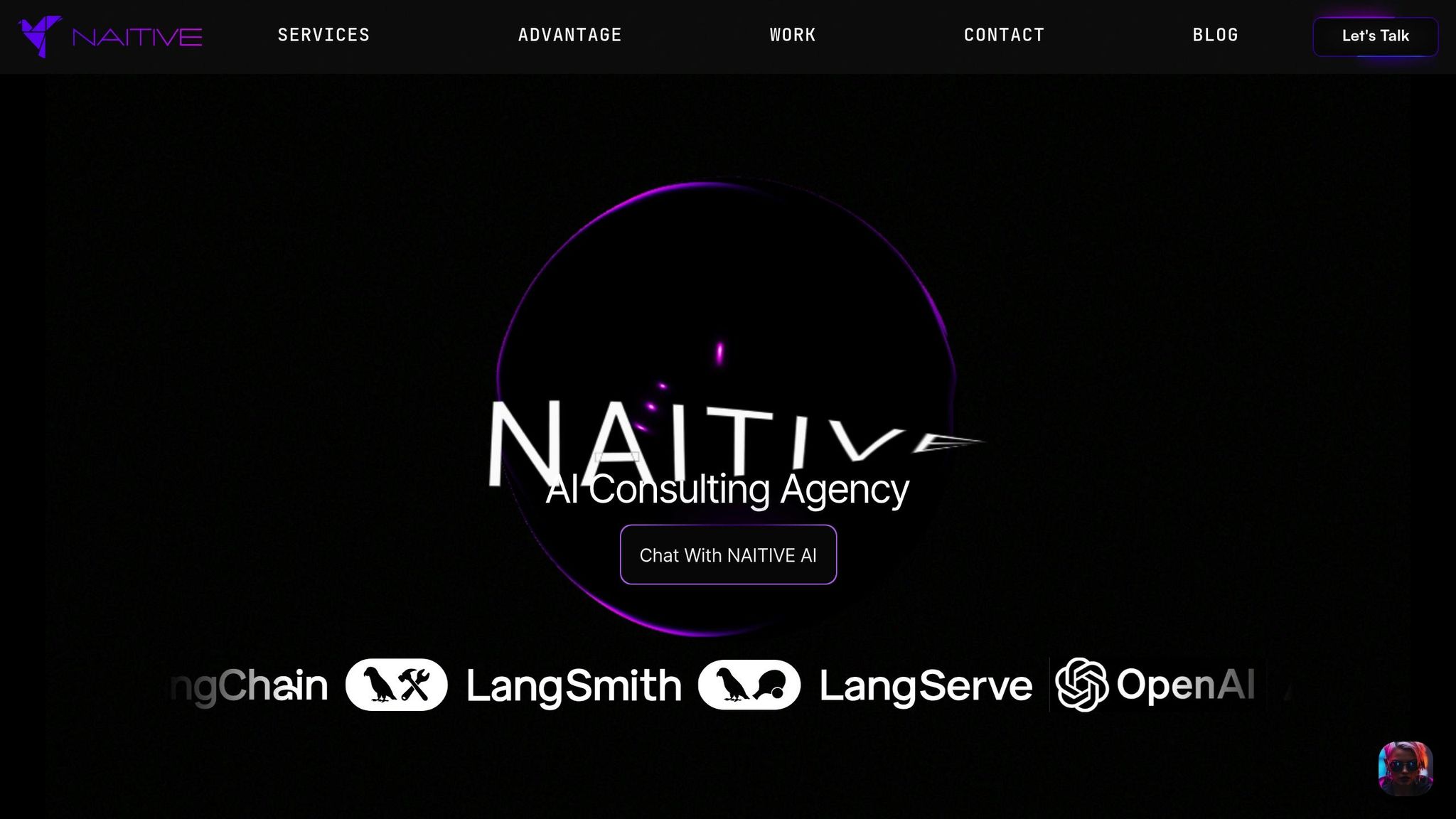Challenges in Domain Knowledge Integration
Explore the critical challenges and solutions in integrating domain knowledge into AI systems for enhanced industry effectiveness.

Integrating domain expertise into AI systems is key to making them effective in specific industries. But this process faces hurdles like converting expert knowledge into machine-readable formats, scaling systems, and maintaining them over time.
Key takeaways from the article:
- What it is: Domain knowledge integration embeds industry-specific expertise into AI systems for better real-world application.
- Why it matters: It improves accuracy, reduces human intervention, and builds trust by aligning AI outputs with industry standards.
- Challenges:
- Lack of standardized frameworks.
- Difficulty translating expert knowledge into AI-compatible formats.
- Scalability and maintenance issues as systems evolve.
- Solutions:
- Use ontology-based models and rule-based systems for structured insights.
- Implement knowledge graphs for flexibility and handling complex relationships.
- Apply explainable AI techniques to promote transparency and trust.
- Foster collaboration between domain experts and AI engineers using MLOps practices.
Real-world impact: Companies like NAITIVE AI have achieved measurable success by integrating domain knowledge, such as improving customer support automation and compliance reporting.
Next steps: Start with small, high-impact projects, ensure clear communication between teams, and adopt scalable tools like knowledge graphs to future-proof your AI systems.
Integrating Domain-Knowledge into Deep Learning|Ruslan Salakhutdinov
Main Challenges in Domain Knowledge Integration
Bringing domain knowledge into AI systems is no small feat. Organizations across industries encounter roadblocks that can derail even the best-laid AI plans.
Missing Standardized Frameworks
A major hurdle is the lack of standardized frameworks. Without them, organizations are left to create their own processes, leading to inefficiencies, incompatibility between systems, and difficulties in measuring success consistently.
Take the financial sector, for example. The inconsistent approaches there hinder efficiency, even as AI spending is expected to hit $97 billion by 2027. This lack of uniformity also impacts reproducibility across industries. In healthcare, only 19% of clinical trials involving AI cited the CONSORT-AI reporting guideline. This points to a broader issue, as highlighted by Makarius et al.:
"The fundamental issues related to structure and functioning in organizations in relation to AI systems remain underexplored." – Makarius et al.
Converting Expert Knowledge into Machine-Readable Formats
Turning human expertise into something AI systems can understand is a monumental task. It’s not just about capturing explicit facts but also the nuanced, tacit knowledge that professionals accumulate over years. This challenge becomes even more pressing when experienced experts retire, taking their contextual and historical knowledge with them.
Large language models often stumble when it comes to understanding nuanced expert contexts, as they tend to process information in binary terms. Additionally, gaps in terminology between data scientists and domain experts can create communication barriers and misaligned goals. On top of that, obtaining high-quality, representative data for training AI models is both costly and complicated. The data itself is often noisy, biased, or subject to rapid change. Striking the right balance between the fresh perspective of junior team members and the deep insights of seasoned experts is essential for building effective AI systems.
Scalability and Maintenance Problems
Even after successfully integrating domain knowledge, organizations face ongoing challenges in scaling and maintaining their AI systems. Research shows that machine learning systems encounter 41 maintainability challenges and 13 scalability challenges.
Scalability issues include training models on ever-growing datasets, managing storage needs, and allocating computational resources efficiently as AI adoption grows. Maintenance, on the other hand, is complicated by constantly evolving data and shifting business requirements. AI systems often follow the "Changing Anything Changes Everything" (CACE) principle, where tweaking one component can unexpectedly disrupt the entire system. This dynamic creates bottlenecks, making it hard to implement timely updates.
Comparison of Integration Methods
Organizations have several options for integrating domain knowledge into AI systems. Each method has its strengths and weaknesses, and understanding these trade-offs is crucial for selecting the right approach.
| Integration Method | Advantages | Disadvantages | Best Use Cases |
|---|---|---|---|
| Rule-Based Systems | - Clear logic and easy interpretability - Simple to validate with domain experts - Predictable behavior |
- Lacks flexibility - Struggles with exceptions - Becomes complex with many rules |
- Regulatory compliance - Simple decision-making - Well-defined processes |
| Ontologies | - Formal knowledge representation - Enables reasoning and inference - Uses standardized vocabularies |
- Requires specialized skills to build - Time-consuming to develop - Can become rigid over time |
- Healthcare terminology - Legal document analysis - Scientific research |
| Knowledge Graphs | - Flexible and scalable - Handles complex relationships effectively - Works with both structured and unstructured data |
- Resource-intensive - Challenging to design and maintain - Amplifies data quality issues |
- Enterprise data integration - Recommendation systems - Multi-domain applications |
Many organizations find that a hybrid approach, combining multiple methods, often delivers the best results for their specific needs. Each method has a role to play, depending on the complexity and goals of the AI project.
Practical Solutions to Fix Integration Challenges
Now that we've pinpointed the challenges, let’s dive into practical strategies for weaving domain knowledge into AI systems effectively.
Ontology-Based Modeling and Rule-Based Systems
A strong starting point for integration lies in ontology-based modeling. This method lays out the concepts, relationships, and rules unique to a domain, creating a structured framework that AI can interpret and use. Think of it as a map that outlines how various elements in your field connect, the rules governing their interactions, and how AI should process them.
For example, in the insurance sector, one global company implemented a hybrid system combining RDF, temporal, and probabilistic graph elements. The results? A 50% boost in risk assessment accuracy, a 30% drop in fraudulent claims, and a staggering $300 million in annual savings through better underwriting decisions.
By establishing a shared, structured ontology, teams can avoid miscommunication. Pair this with rule-based systems, which translate expert decision-making into logical, interpretable statements. This approach is particularly crucial in compliance-heavy or safety-critical industries. Together, these components lay the groundwork for scalable and dynamic AI systems.
Using Knowledge Graphs for Scalability
Knowledge graphs are revolutionizing how domain knowledge is represented and reasoned with in AI. The market for these graphs is expected to skyrocket from $4.8 billion in 2023 to $28.5 billion by 2028, growing at a compound annual rate of 43%.
"The future of AI lies not in bigger models, but in smarter ways of representing and reasoning with knowledge. Knowledge graphs, in their various forms, are at the heart of this revolution." – Yoshua Bengio, Turing Award winner
The flexible schema of knowledge graphs allows for the quick integration of new relationships, which is essential for industries where requirements shift frequently.
Morgan Stanley offers a powerful example. They implemented a federated enterprise knowledge graph for risk and compliance reporting. This system not only improved analyst efficiency but also saved 20% of knowledge workers’ time each week. And as regulatory demands evolved, their setup adapted seamlessly by integrating new compliance rules without requiring costly overhauls.
To get started, work with a small dataset to validate the ontology and database structure. Different databases excel in different scenarios - property graph databases like Neo4j and TigerGraph are great for path-heavy queries, while RDF stores shine in complex pattern matching with inferencing. For handling massive graphs with billions of edges, distributed systems like TigerGraph and Amazon Neptune are excellent choices. Finally, thorough documentation of ontologies and domain-specific terms ensures your team can fully utilize the system.
Explainable AI Techniques for Trust and Clarity
While structuring data is essential, transparency is equally critical. Explainable AI (XAI) techniques make AI systems more transparent, helping users understand not just the "what" but also the "why" behind decisions. Tools like LIME (Local Interpretable Model-agnostic Explanations) and SHAP (SHapley Additive exPlanations), along with libraries like Alibi and AI Fairness 360, are valuable for this purpose.
In healthcare, for instance, deep learning models analyzing retinal images for diabetic retinopathy use techniques like Grad-CAM to highlight the most influential areas in a diagnosis. Similarly, financial institutions leverage XAI to explain credit decisions, offering customers clear reasons for loan approvals or denials based on factors such as credit history, income, and debts. In manufacturing, XAI helps identify sensor readings that signal potential equipment failures.
Best Practices for Cross-Team Collaboration
Successful AI development thrives on seamless teamwork, where clear communication and well-defined processes are just as important as technical skills. Collaboration between domain experts and AI engineers is essential, as working in silos often leads to costly mistakes.
Improving Communication Between Teams
A common hurdle in AI projects is the disconnect between engineers and domain experts. Misaligned assumptions, unfamiliar terminology, and differing perspectives can create significant challenges. The key to overcoming these issues is to establish a shared understanding early on. Collaborative workshops, supported by tools like journey maps, help align goals. Rapid prototyping combined with frequent feedback checkpoints ensures domain experts can provide input early in the process. Asking team members to rephrase key concepts can also reveal misunderstandings before they turn into major problems.
One software development team that embraced these practices saw impressive results: a 47% reduction in time-to-production for new features, an 83% drop in critical bugs, and a 92% retention rate of knowledge during team transitions. They also reported a 41% boost in team satisfaction and slashed onboarding time from 12 weeks to just 4 weeks.
Establishing clear feedback loops is another critical step. Regular review sessions, such as weekly model evaluations, give domain experts the chance to identify issues and propose refinements. Custom dashboards can further enhance collaboration by presenting both technical metrics and business-relevant insights in a way that’s accessible to all team members. At NAITIVE AI Consulting Agency, these strategies have been instrumental in maintaining solutions that are both technically sound and aligned with domain-specific needs.
"Placing subject matter experts in the driver's seat of prompt engineering is crucial as they possess the necessary judgement to evaluate the output of LLMs in their domain." - Sambasivan and Veeraraghavan, 2022
While clear communication lays the groundwork, integrating MLOps practices strengthens collaboration even further.
Adding MLOps for Reproducibility
In addition to fostering better communication, MLOps practices bring consistency and reliability to both technical and domain workflows. By streamlining machine learning development, MLOps enables teams to reuse code and reproduce results effectively. This approach has gained traction, accounting for 25% of GitHub's fastest-growing projects.
Key practices include implementing version control for models, datasets, and code, as well as enforcing continuous integration and delivery pipelines. Clear documentation and open communication channels are critical to the success of these efforts. MLOps also offers crucial features like access control, audit trails, and traceability, ensuring accountability and security.
Encouraging the creation of shared prompt libraries and incorporating knowledge-sharing initiatives into performance reviews can help embed these practices into an organization’s culture. Together, these strategies ensure that technical and domain teams remain aligned, efficient, and ready to tackle challenges as a cohesive unit.
Case Applications and Industry Impact
The rise of domain-specific AI is reshaping industries at an incredible pace. By 2025, the global AI market is projected to reach $243.72 billion, with $66.21 billion coming from the U.S. alone. This shift is pushing companies to adopt specialized AI solutions that deliver more accurate and tailored results compared to general-purpose alternatives.
Applications in Business Process Automation
When domain expertise is integrated into automation, it evolves into intelligent decision-making. According to McKinsey, corporate AI use cases could add $4.4 trillion in productivity growth, with 92% of companies planning to increase their AI investments within the next three years.
Here are some of the standout applications:
- Predictive maintenance: AI identifies patterns in manufacturing systems to minimize downtime and reduce costs.
- Financial fraud prevention: Systems trained on transaction patterns detect fraudulent activities in real time.
- Legal research automation: AI designed for legal contexts quickly identifies relevant precedents, cutting down on research time.
These examples highlight how domain-specific AI is driving smarter, more efficient processes across industries.
Industry-Specific Examples
In robotics and manufacturing, fine-tuning simulations to mimic real-world conditions has significantly improved performance in both virtual and physical environments. This underscores the importance of training AI under highly specific conditions.
In materials science, embedding domain knowledge into machine learning has sped up the discovery of new compounds and configurations, accelerating innovation.
The energy sector is also seeing remarkable advancements. Smart management systems now optimize energy usage in real time by analyzing consumption patterns, grid dynamics, and broader sustainability goals.
"Domain expertise is the secret sauce that separates Industrial AI from more generic AI approaches. Industrial AI will guide innovation and efficiency improvements in capital-intensive industries for years to come." - Willie K Chan, Chief Technology Officer, AspenTech
These breakthroughs show how domain-specific AI is unlocking new possibilities across different fields.
NAITIVE AI's Role in Driving Industry Change

NAITIVE AI stands out by using deep domain knowledge to deliver custom AI solutions. Instead of relying on generic tools, they focus on analyzing client operations to pinpoint areas where AI can make a tangible difference.
The results speak for themselves. One of their Voice AI Agents handles 200 outbound calls daily, boosting customer retention by 34% and conversions by 41%. Another agent manages 77% of Level 1 and Level 2 client support tasks.
"The Voice AI Agent Solution NAITIVE implemented is from the future"
"The AI Agent NAITIVE designed now manages 77% of our L1-L2 client support." - Sarah Johnson, CXO
NAITIVE's autonomous agents are built to handle complex, industry-specific tasks, delivering measurable efficiency and strategic advantages. This approach addresses a critical gap in the market: while over 90% of Fortune 500 companies use AI, only 1% of leaders believe their organizations are fully mature in AI deployment.
"AI bias is quite rampant in general-purpose AI models. This is why businesses are shifting toward domain-specific or vertical AI agents. With domain-specific AI agents, the occurrence of AI bias is minimized, since businesses train and fine-tune AI models on their own, contextually relevant data. Such AI models are less biased and have 'skin in the game.'" - Nadeem Khan, VIDIZMO LLC
As 40% of professional services prepare to adopt generative AI by 2025, companies that integrate domain expertise into their AI strategies are positioning themselves for a major competitive edge.
Conclusion
Integrating domain knowledge into AI systems is no small feat, but the path forward is becoming clearer. As outlined earlier, challenges like data quality, system integration, skills gaps, resistance to change, and ethical concerns demand well-thought-out strategies to ensure progress.
Consider this: Only 29% of business leaders feel confident about the ethical use of AI, and 60% of public-sector professionals cite AI skills shortages as their biggest hurdle. Yet, companies that have successfully integrated generative AI into customer support have reported productivity boosts of roughly 14% . These stats highlight both the obstacles and the opportunities in this space.
Key Takeaways
To effectively integrate domain knowledge, collaboration is essential. Combining AI-driven insights with expert human input through hybrid workflows has shown promising results. For instance, in the medical field, multi-view systems designed to align with radiologists' workflows have improved diagnostic accuracy by about 0.018 over baseline models.
Practical steps include setting up structured data pipelines, using middleware to connect legacy systems, and adopting scalable cloud-based infrastructures. Addressing talent gaps through upskilling and establishing strong data governance are equally important. Additionally, embedding ethical frameworks ensures fairness and transparency throughout the development process.
NAITIVE AI exemplifies these principles by leveraging deep domain analysis to create tailored solutions, enhancing both customer engagement and operational efficiency.
Organizations that successfully blend technical expertise with domain-specific knowledge position themselves for long-term success. With the AI market rapidly expanding and specialized applications on the rise, mastering domain knowledge integration today sets the stage for future competitive advantages .
The best way forward? Start small with pilot projects, target high-impact areas, and build hybrid models that balance human expertise with AI capabilities. The challenges are real, but so are the rewards for those who approach this journey with a clear and strategic plan.
FAQs
What are the biggest challenges in integrating domain knowledge into AI systems, and how can businesses address them?
Integrating domain expertise into AI systems isn't always straightforward. Challenges like poor data quality, a lack of skilled professionals, and the limitations of generic AI tools often stand in the way. Many businesses find it tough to customize off-the-shelf AI solutions to fit their specific needs or align them with their industry knowledge.
To tackle these hurdles, businesses should start by setting clear and measurable objectives for their AI projects. Involving domain experts early and throughout the process is key to ensuring the technology aligns with industry-specific requirements. Additionally, investing in employee training to improve AI literacy and prioritizing high-quality, well-structured data are essential steps. To get the most out of these systems, companies should also focus on seamlessly integrating AI into their current tools and workflows.
For businesses seeking tailored support, NAITIVE AI Consulting Agency offers expertise in designing and implementing AI solutions that align with your unique goals and challenges.
How do ontology-based models and knowledge graphs improve domain knowledge integration in AI systems?
Ontology-based models and knowledge graphs play a key role in integrating domain knowledge by offering structured frameworks to organize and connect diverse data sources. By representing entities and their relationships in a graph format, these tools help AI systems interpret information more effectively, enabling reasoning and uncovering deeper insights.
These models ensure consistency across data, making them particularly useful in complex areas like healthcare, where precise and interconnected information is essential. Ontologies serve as connectors between scattered data points, allowing AI systems to provide smarter and more dependable solutions.
Why is cross-team collaboration essential for integrating domain knowledge into AI systems, and how can organizations improve communication between domain experts and AI engineers?
The Importance of Cross-Team Collaboration in AI Development
Bringing domain knowledge into AI systems isn't just a technical step - it’s a collaborative effort. When teams work together effectively, they align technical capabilities with business goals, minimize risks like bias, and create AI solutions that are more relevant and practical.
One way to make this happen is by fostering close cooperation between domain experts and AI engineers. This partnership bridges the gap between specialized knowledge and technical execution, leading to AI applications that perform better in real-world scenarios.
Improving communication is key. Use clear, straightforward language to ensure everyone is on the same page. Encourage a shared understanding of objectives, and set up regular opportunities for teams to collaborate. Tools like shared project management platforms or AI-powered planning tools can make a big difference by highlighting task dependencies and simplifying workflows. This kind of unified approach helps teams stay aligned and focused, ultimately boosting both the quality and effectiveness of AI projects.




